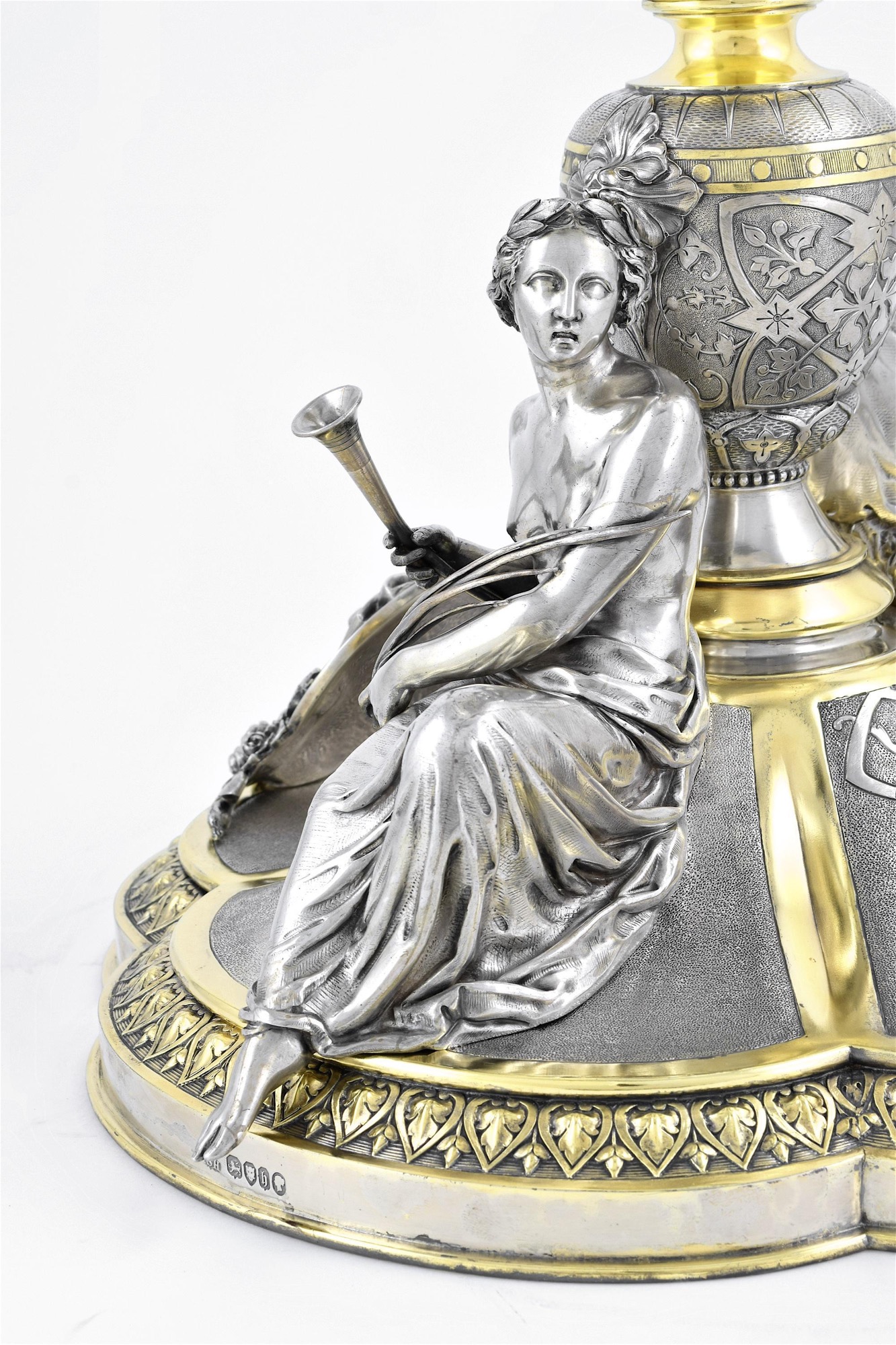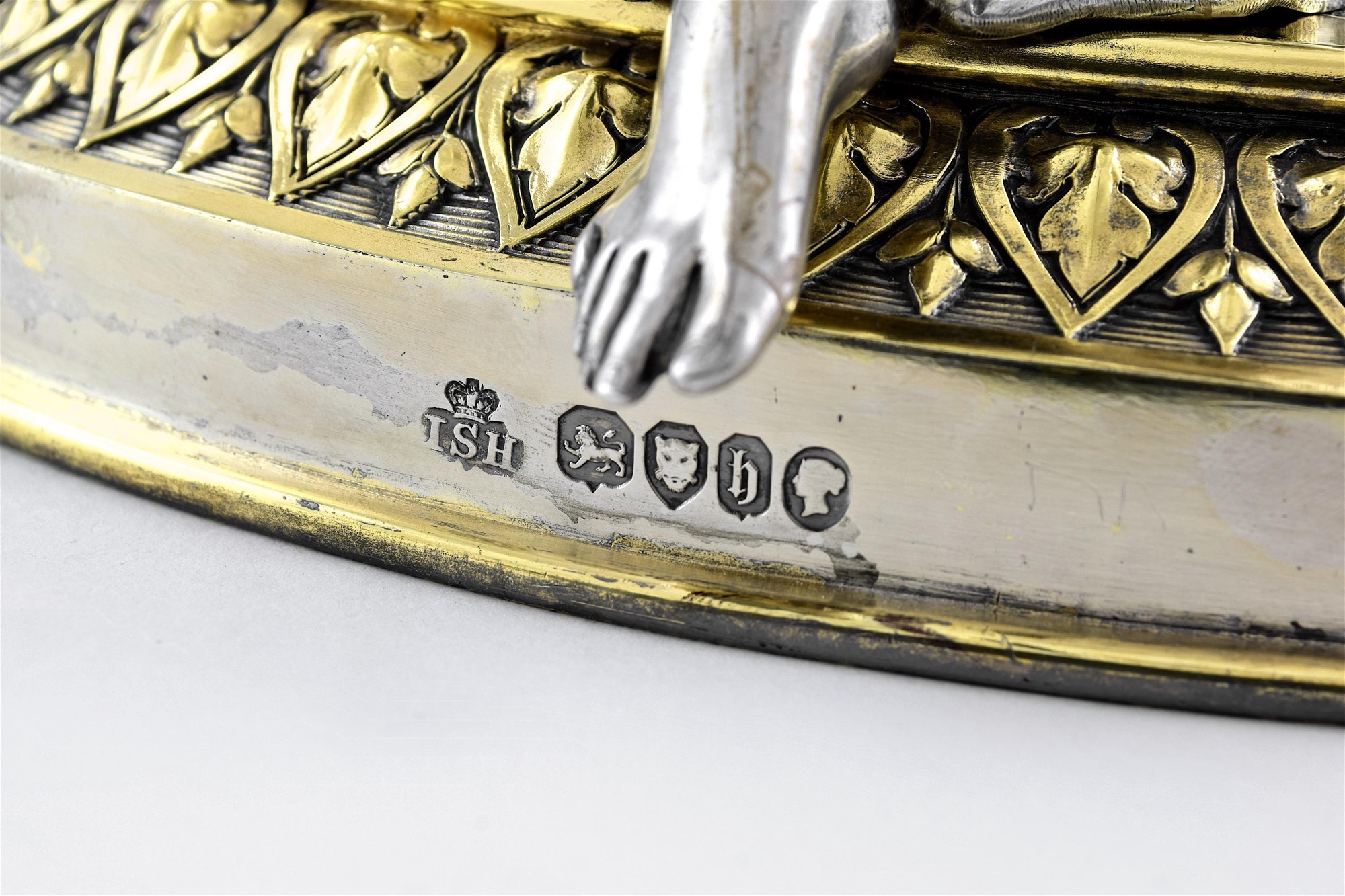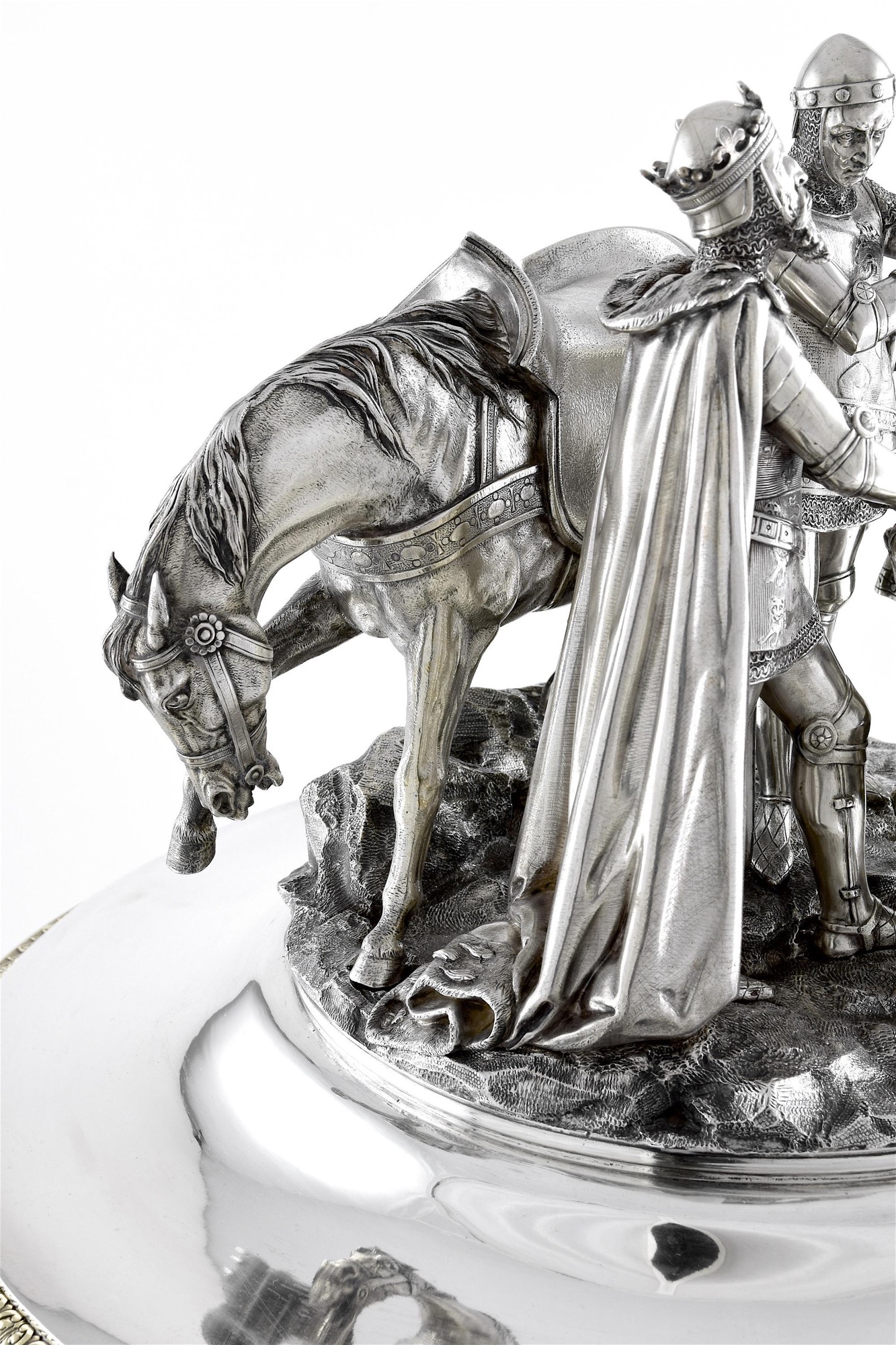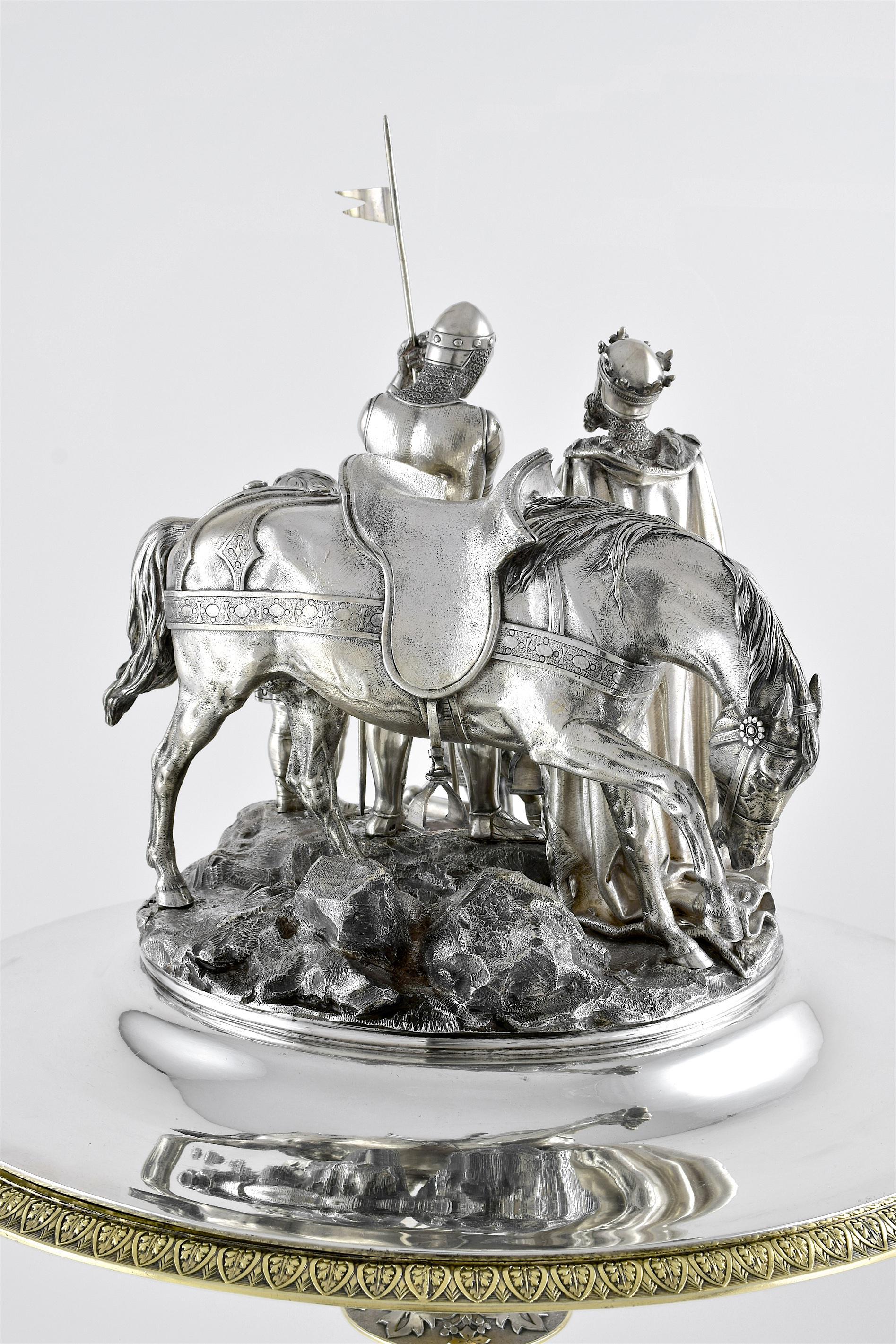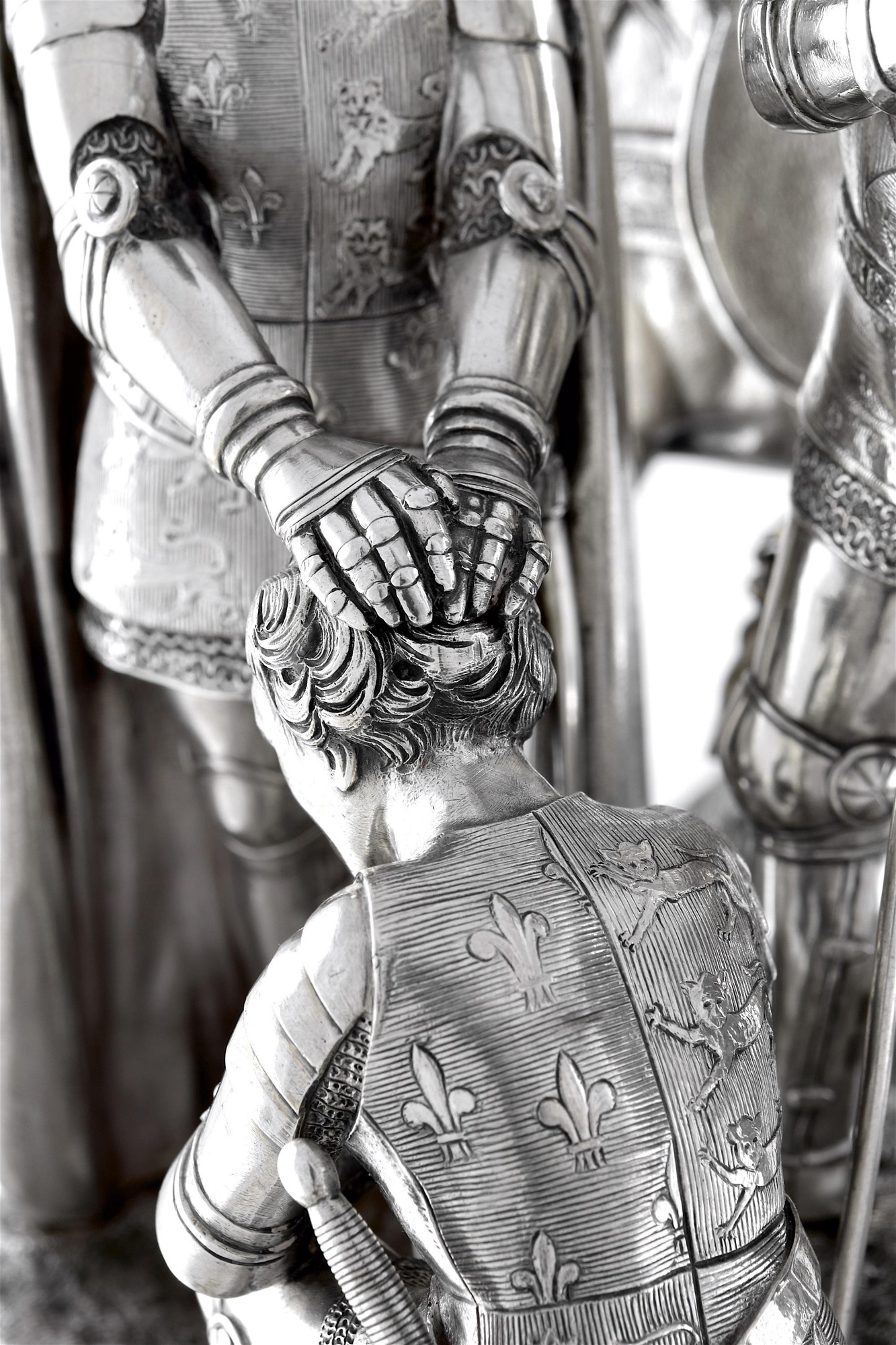The Goodwood Chesterfield Cup 1863
The Goodwood Chesterfield Cup 1863
A monumental Victorian parcel-gilt silver presentation trophy in the form of a Tazza
Hallmarks for John Samuel Hunt - Hunt and Roskell, London 1863
The Design attributed to Henry Hugh Armstead
The piece is pictured in the illustrated news and the scene on top is described:
"The Chesterfield Cup was Won by Lord Annesley's Ace of Clubs on Friday week' It is a Tazza in silver partly gilt. The group on the cover represents King Edward III. And his son, Edward the
...
A monumental Victorian parcel-gilt silver presentation trophy in the form of a Tazza
Hallmarks for John Samuel Hunt - Hunt and Roskell, London 1863
The Design attributed to Henry Hugh Armstead
The piece is pictured in the illustrated news and the scene on top is described:
"The Chesterfield Cup was Won by Lord Annesley's Ace of Clubs on Friday week' It is a Tazza in silver partly gilt. The group on the cover represents King Edward III. And his son, Edward the
Black Prince on the battlefield of Cressy [SIC] Aug. 26, 1346. 'Sweet son! God give you good perseverance! You are my true son, for loyally have you acquitted yourself this day, and worthy you are of a crown" Young Edward bowed very lowly, and, humbling himself, gave all the honour to the King his father" - Vide Froissar. On the foot are figures for fame and victory and shields bearing the feathers and coat of arms, as on the tomb [of Edward the Black Price] at Canterbury."
It was after the battle of Crecy that Edward the Black Prince took the three feather banner of his defeated enemy as his own emblem creating what has become known as "The prince of Wales Feathers". After the battle, the prince is said to have gone to the body of the dead king John of Bohemia, and taken his helmet with its ostrich feather crest, afterwards incorporating the feathers into his arms, and adopting King John's motto, "Ich dien", as his own.
A comparative example of a Trophy presentation Tazza designed by Armstead is in the collection of the Victoria and Albert museum
11767
Dimensions










